Soviet ingolin torpedo 53-57
October 10 1957 of the year passed the first tests of a national torpedo with a nuclear warhead from a submarine. Our fleet received a substantial argument at sea in a dispute over maritime rule in front of a likely adversary. An experienced atomic version of the 53-57 torpedo, launched from the C-144 submarine of the 613 project, having traveled 10 kilometers, exploded at a depth of 35 meters. The result of the explosion was the sinking of two destroyers, two submarines and two minesweepers. There were no more ships in the bay, otherwise they would have been carried into the depths of the sea. Understanding the importance of new weapons, which can determine the result not of a separate sea battle, but of an entire operation, already in 1958, the Navy adopts the 53-57 torpedo with the RDS-9 nuclear warhead and assigns it the 53-58 cipher. However, it is worth noting that the 53-57 torpedo was a step forward in the development of domestic torpedo weapons, not only because of the possibility of using a nuclear weapon, but also thanks to a promising and unusual for that time, peroxide-hydrogen powerplant.
During the First World War, when the fleets were armed with mostly Whitehead gas-vapor self-propelled mines, their significant drawbacks were revealed: short range and speed, visual trace, low reliability and a number of others. Therefore, in the interwar period, the efforts of torpedo builders were aimed at eliminating these shortcomings and, in particular, at finding new power plants for torpedoes.
As one of the solutions, it was supposed to replace compressed air as an oxidizer of the fuel with more active oxygen, obtained by decomposition of hydrogen peroxide. For this, the so-called low-water hydrogen peroxide (MPV) was used, in which the concentration of hydrogen peroxide reached 83%. In the process of decomposition of 1 kg MPV 0,47 kg of free oxygen, water and 197,5 KJ of heat were released.
At that stage, at the beginning of the thirties, German scientists achieved the greatest success. Professor G. Walter patented in Germany a promising way of using MPV for this purpose. Based on the serial piston gas-vapor torpedoes G7-a (letter G means torpedo caliber - 21 inch or 533 mm, and the 7 figure - its length in meters), having 30 km speed and 8 km range, 1939 - 1940 years. They created its modernized version, which received the G7-uk code and the everyday name Ingolin torpedo.
Sea tests showed the stability of the thermal process in its power plant, but the speed of the torpedo was insufficient due to the low power of the piston engine. And although work was going on in parallel to use oxygen-enriched air as an oxidizing agent, as well as electricity (respectively torpedoes of the G7-c and G7-c1 types), fulfilling the order of the German fleet, the company "Walter" has widely launched work to improve, test and manufacture its torpedoes. For this, a special factory was built in Arensburg, near Hamburg, designed to produce 2 thousand torpedoes per year; attracted about 20 counterparty enterprises and a large number of large specialists and scientists. Field tests entrusted the torpedo institute in Eckernfjord.
A new version of this torpedo, the "fish" (code G7-ut), was developed in 1941 year. It used an active-type single-shaft turbine designed for 430 horsepower, with a gearbox that reduced the rotor speed of the turbine from 25000 to 1670 rpm on two propellers of opposite rotation. Debugging of these torpedoes was carried out before the 1942 year. The most reliable option turned out to be developed on the theme "Stone Bass". This torpedo had a length of 7,18 m, a mass of 1680 kg and a negative buoyancy at the beginning of the course 380 kg. In the spring of 1944, their serial production began.
The scope of field tests can be judged by the fact that in 1944, about 1000 rounds of ingolin torpedoes of various types were fired. However, only 30% of them showed full compliance with the requirements, 35% did not fulfill one of the requirements when passing a given distance, 22% had defects that led to "no income", and explosions occurred on 1%. This gave German specialists the opportunity to deeply understand the shortcomings of the design of torpedoes of this type. However, not all of them could be eliminated in a short time. In addition, the Walter firm’s desire to take a monopoly position in the creation of ingolin torpedoes negatively influenced the business, taking into their own hands not only their production and testing, but also all the scientific work on this topic. This was opposed by representatives of the torpedo institute in Eckernfjord, who also had extensive experience in working out torpedoes, both steam and gas, and electric ones. Representatives of the Navy were very worried about the explosiveness of the Walter torpedoes, and therefore, the company's chief designer said: "If the Navy had invented a bicycle, this invention would not have been in the public domain for security reasons today."
Germany’s unfavorable situation on the fronts forced us to force these works to the maximum. The imperial minister of weapons, Speer, even introduced the post of "ingolin dictator" to decide on the sequence of their execution. All specialists were redeployed for revision and development of these torpedoes, and a number of promising developments in other torpedo-building areas were discontinued. It bore some fruit. Ingolin torpedoes were rapidly developed, helped by the high production culture in the German industry, especially in the manufacture of chemically pure components (in particular, the catalyst) and the assembly of turbines and ballasts. However, all these measures turned out to be overdue and, despite the enormous intellectual and material costs, the ingolin torpedoes were not fully developed, and therefore did not enter into service with the German fleet until the end of the war.
After the defeat of Germany, work at the torpedo institute in Eckernfjord did not stop until November 1945 of the year, but now the German specialists have already worked under the supervision of the military representatives of the United States and England. Moreover, the latter did not introduce the materials on these works to their ally, the USSR. True, our leadership also sent its specialists to Germany, including to study the experience of using MPV for military purposes. There are employees of the Main Department of the Sudprom. Volin, D.A. Kokryakov, V.V. Lavrentiev, S.I. Litvinov, V.V. Tkachenko, I.A. Starlings and others collected, systematized and studied the available material on this issue. In addition, on reparations, part of the documentation for the ingoline torpedoes, some of their incomplete material parts, separate booths and equipment were sent to the USSR, where several German specialists in naval technology were also sent.
By that time, we also decided to create models of naval weapons based on the use of MPV. A specialized enterprise was established on the basis of the Ostechbureau in the city of Lomonosov, whose director was appointed M.P. Maximov, chief engineer and chief designer - D.A. Kokryakova, head of the department - A.I. Tarasov. It should be repeated once again that the most comprehensive materials on the latest German developments in this field, in particular on the Kamenny Kit torpedo, and the main specialists of this direction turned out to be from the allies, and the German engineers who arrived in the USSR were not sufficiently competent in this business, or did not want to fully share their secrets.
As a result, Soviet engineers faced a difficult task. It was necessary to study the scattered Germanic materials and samples, find out the defects of ingolin torpedoes that did not allow the Germans to adopt them, and taking into account our pre-war developments, for example, turbine torpedoes of Professor Uvarov and the Water torpedoes, which were not completed due to the start of the war, create a reliable and effective peroxide-hydrogen torpedo. For this it was necessary: to find out and eliminate the causes of the explosions of such torpedoes; to work out the thermal process in the engine using outboard seawater; achieve a satisfactory progress of the torpedo on the circulation; build stands and equip bases for testing; to coordinate the issues of the operation of peroxide-hydrogen torpedoes in the naval conditions and on the bases of the Navy weapons.
In 1950, the construction of sites for the preparation and conduct of marine tests of these torpedoes at the Gidropribor plant (Theodosia) began. It was necessary to build, in particular, a special storage facility for the MPV, a chemical laboratory, special stands and a scow for shooting.
In the same year, the first trial test of the combustion chamber with the systems for supplying power components according to the "MPV - fuel - liquid catalyst" scheme ended with an explosion at the plant's stand. As the analysis has shown, this was due to the slow arrival of the igniter into the chamber. In the future, the installation of additional recording equipment made it possible to quickly identify the causes of failures during testing and to achieve the necessary sequence of energy components entering the chamber, as well as to work out the nozzle designs that provide the required spray angles for complete mixing of the components. The transition to another scheme "MPV - fuel - kerosene brand UU" using a liquid igniter and fresh water was made.
After conducting more than 30 tests using this technique, they were transferred to the sighting station in Feodosia. There, in October 1951, a batch of six experimental torpedoes was sent. They were a lightweight (mostly due to their non-refueling components) variant of the developed torpedoes, which ensured the range to 1000 m. The first sea test (in torpedo terminology - braking test) was carried out in March 1952. The torpedo successfully passed a given distance, and its normal start, depth and roll, and most importantly - tracelessness were noted! The latter circumstance was confirmed during the control from the shore of the support ships and the aircraft.

The result was confirmed by four more shots, after which they decided to go to the so-called military signboard. However, the torpedo explosion in the launch pad grill, which occurred in May 1952 of the year and led to its drowning (fortunately, according to the safety instructions, the shooting team was on the boat), forced to return to the idea of using a solid catalyst and continuing brake tests.
In accordance with the assignment, they were carried out in seawater, which was first fed into the combustion chamber by displacing it from the tanks, because the corresponding pump with a capacity of 2 l / s, operating at 45 atm. At the time, this was a serious problem. It should be noted that the main difficulty in the use of sea water in torpedoes, noted by domestic developers even before the war, was scaling. Having set itself the goal of eliminating this phenomenon, it was established experimentally that, at a certain temperature regime maintained in all zones of the flow of the working fluid, there is no scaling; moreover, the salts dissolve in a pair that has a moisture content of 95% at a pressure of 30 – 32 atm and a temperature of 235 ° C, and the ratio of components (“kerosene - MPV - water”) should be 1: 6: 15, respectively.
At the same time, the GIPH, together with NIMTI, carried out work on finding a catalyst for the preliminary decomposition of MPV before mixing it with kerosene. And although it was possible to develop a solid catalyst relatively quickly, until its final implementation, it was decided to continue using liquid catalyst and fresh water to study ballistics and gain experience in operating peroxide-hydrogen torpedoes. Such tests continued until November 1952.
By that time, two experimental torpedoes with a solid catalyst had been prepared, and in December 1952 of the year fired the first shot at a distance of 7000 m. Later on, they completed another sea test around 70. But in July 1953, a torpedo explosion at a distance of a stroke revealed a new danger: the accumulation of MPV between the shell and the tank body, its drainage to the stern and rapid decomposition with an explosion, in contact with the hot walls of the combustion chamber and the nozzle box. Such phenomena occurred during the work of German specialists, the relevant documents noted the explosiveness of torpedoes when passing a certain distance.
This required reworking the casing and the device for flushing the MPV supply line — from the tank to the combustion chamber, although the intensive cooling of the hot chamber and the nozzle box should have reduced the turbine economy.
Another problem manifested itself already in ballistic tests. When moving torpedoes on circulation, the results obtained by German specialists were confirmed: when turning, the radius of which was 70 m, which was 2 times less than on other domestic torpedoes, the torpedo was either buried in the ground, or jumped out to the surface. Soviet specialists managed to understand the reason for this behavior. As a result, the domestic torpedo managed to avoid creating a special roll-leveling mechanism, which German specialists had to use, and ensure a steady progress along a given trajectory: shooting at an angle, movement with a long and short zigzag, etc.
So most of the task was successfully solved. Meanwhile, a design team led by N.P. Volkova prepared the technical documentation for the release of an experimental batch of torpedoes and developed the technology for their manufacture. It should be noted that at that time only plants of the Ministry could produce a turbine section of torpedoes aviation industry, but even there faced the difficulty of manufacturing helical gears of the gearbox, which had to withstand a peripheral speed of 50 m / s. A similar value for aircraft engines then reached 20 m / s.
Yet in 1954, an experimental batch of torpedoes in the amount of 10 units was manufactured. Having first received the DBT cipher (“Far-field, traceless torpedo”), it absorbed the ideas and achievements obtained during all the tests. Among them are: tanks of maximum capacity, washed compartments, pumping supply of seawater outboard water driven by a turbine, preliminary decomposition of hard liquids by the solid catalyst, use of contact and non-contact fuses, etc.
Braking torpedoes from the pilot batch was completed only in April 1955. The delay was due to the need to eliminate the causes of the non-return valves, as well as the self-oscillations of the water flow regulator, which reduced the output power of the engine. Then, until October, they were engaged in the adjustment of an experimental batch. And here a new phenomenon was discovered, the study and elimination of the influence of which required a whole quarter.
So, when shooting at full range, after passing about one-third of the distance, a torrent appeared in the torpedo (German experts also noted this). She swayed more and more, could not stand the depth, scoured the course, and then lost controllability. The complexity of solving this problem was aggravated by the fact that this phenomenon was not observed on all torpedoes of the party (it did not appear at all on the stand when checking control devices). Therefore, at first it was assumed that the cause of the buildup is the oscillation of the power components in the liquid mirror reservoirs as they are consumed. The assumption was not confirmed, and the buildup was eliminated by replacing the maneuvering device, developed on the basis of captured documents, similar to a serial domestic device. However, further studies have shown that such a buildup was caused by the inclination of the gyroscope axis due to the increased vibration of the torpedo body at the installation site of the device, to which our device was less sensitive.
After the elimination of this defect, the tests were successful, including from submarines, since the torpedo was designed for them (PL Ave 613, 633 and 641).
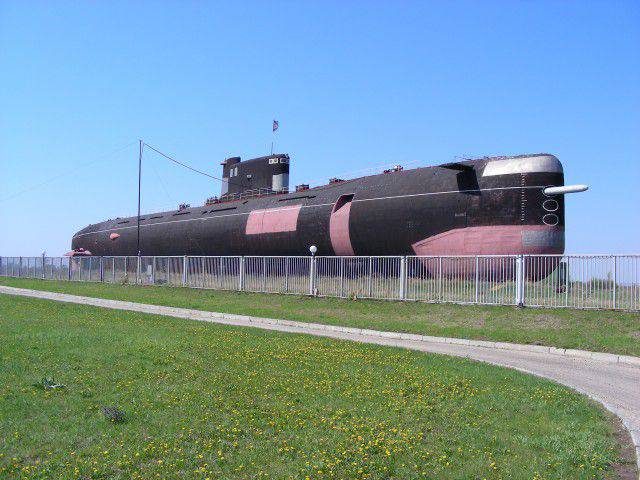
However, the Navy proposed to conduct firing from surface torpedo tubes. The first shots from torpedo boats of the Ave 123-K and 183 were carried out at their full speed with the settings of the rudders, similar to those on the serial domestic combined-cycle torpedoes. Thus, we wanted to choose the time of the engine starting deceleration, at which its work would begin, of course, after landing. This was caused by the fear that when starting the engine in the air section of the trajectory, the turbine could go astray.
The results of the first tests turned out to be negative: the torpedo went into a deep “bag” (16 — 20 m) with a large alternating roll, and then jumped out onto the surface, flying through the air 30 — 50 m. revolutions of the turbine, although the destruction of the material part did not occur. A change in the rudder settings, a delay in the disclosure of additional horizontal stabilizers, and the introduction of an elastic coupling between the hydrostat and the pendulum did not lead to positive results. The solution was found in the analysis of one of the non-award tests, when, as a result of a failure of the deceleration system, the engine started on the air portion of the trajectory and the torpedo entered the water with the engine already running and the propellers rotating. In this case, it quickly leveled in depth and roll, making a very small "bag." It turned out that the action of force on the propellers that work when water is flowed at a significant angle of attack, which is well known in theory, “worked”. She stabilized the torpedo after landing.
After that, the bench experimentally determined the rate of refueling torpedoes with oxidizer and fuel, as well as the time required to slow down the engine to avoid unwanted "abandonment" of its speed. These experiments required the rapid creation of home-made devices that record changes in the parameters of the engine state in the interval 1 — 2. Today, it’s curious that when firing a torpedo boat, which was moving at a speed of 40 units, the staff of the design bureau was assigned to monitor the engine start, tied to the bollard in its nose.
After shooting torpedoes from torpedo boats and introducing corrections to slowing the launch of a torpedo engine, depending on the height of the firing ship, the DBT torpedo was shot down from the EM of 30-bis and 56. These tests revealed insufficient rigidity of the sliding feathers of the tail section and excessive elasticity of the mechanical transmission of control actions to the rudders of the torpedo, which required some changes in the design of its tail section.
The state tests completed in 1957 year showed that the new combined-cycle torpedo fully complies with the tactical and technical requirements presented, has good reliability, high accuracy of travel in the direction both to the full forward range and at different trajectories of movement. This was especially emphasized by the chairman of the selection committee, the then commander of the Black Sea Fleet. According to the accepted methodology, the combat use of the torpedo was tested by shooting it in full equipment at the rock (inertial fuse) and at the barge-target (non-contact fuse). After that, the torpedo was adopted under the code "T 53-57", and it became the ancestor of a whole series of peroxide-hydrogen torpedoes of our fleet.
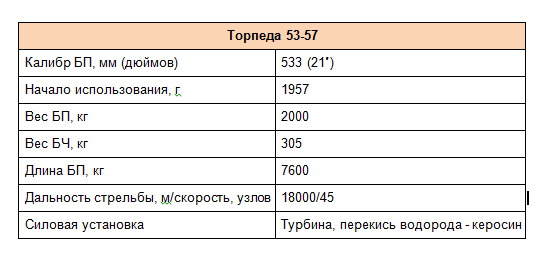
Sources:
Shirokorad A. B. Weapons of the domestic fleet. 1945 — 2000. Minsk: Harvest; M .: ACT, 2001. C. 295-297.
Kolyadin P. Notes of the military representative. Internet edition. 2010. C. 4-8.
Chechot O. Peroxide-hydrogen torpedoes // Sea collection. 1996. No.11. C. 62-66.
Dotsenko V. History naval art. Volume II. Fleets of the twentieth century. Book 2. M .: Eksmo. 2003. C. 346-349
Karpenko A. The fate of the nuclear supertorpedy // Military-industrial courier. No. 42 (459). 24 October 2012 of the year.
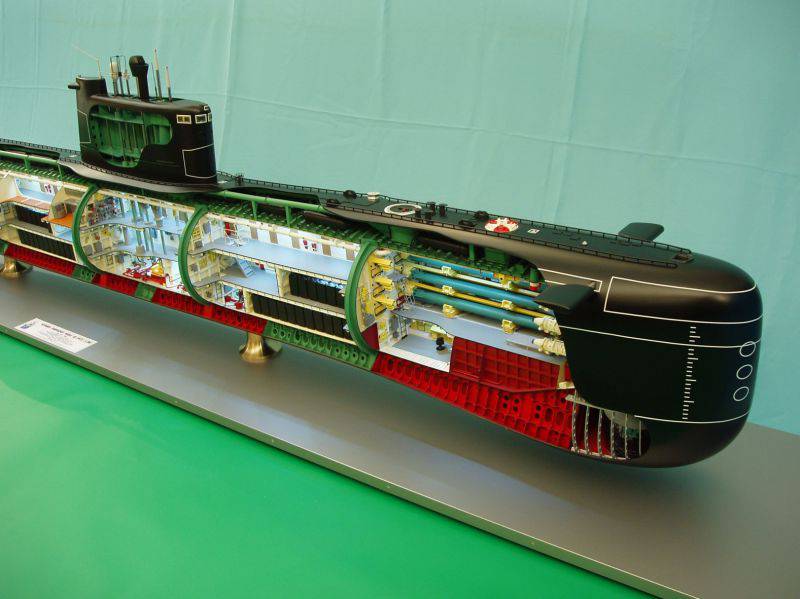
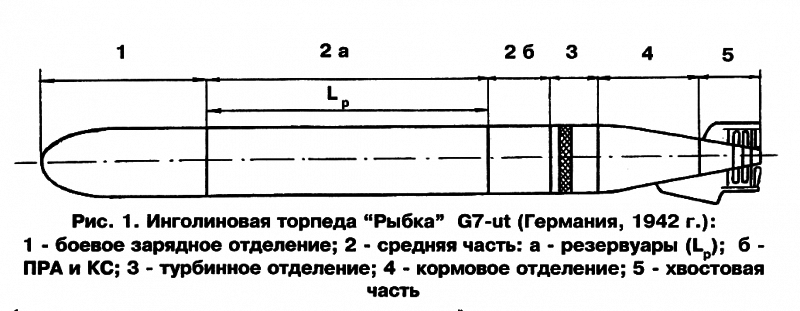
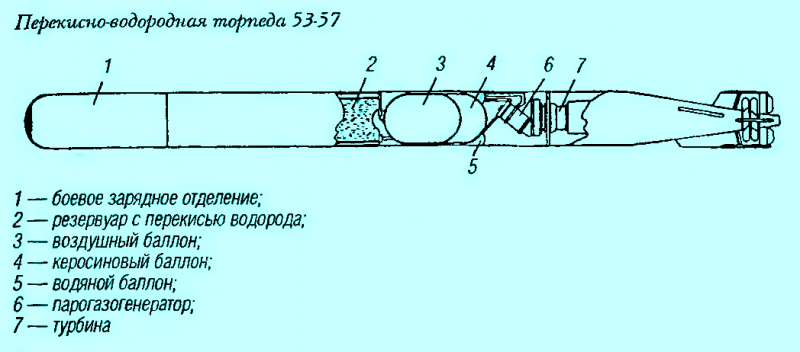
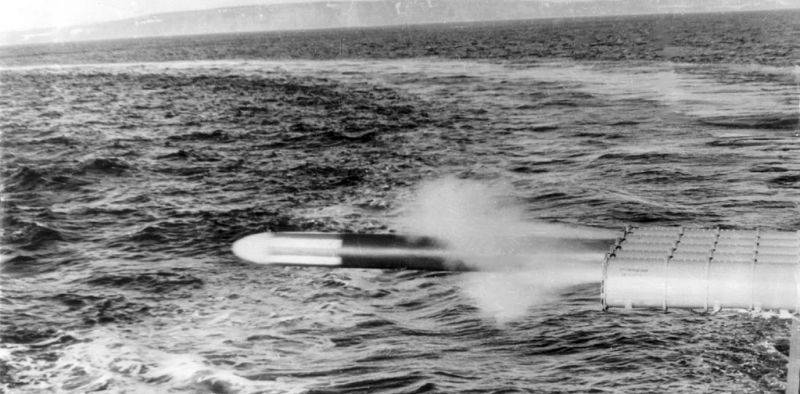
Information